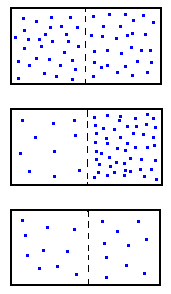The Hubble law for the large scale redshift of galaxies (i.e. redshift proportional to distance) is usually taken as evidence (if not proof) for the picture of an expanding universe in general and the Big Bang theory in particular. However, recessional velocities have by no means been actually measured, and the assumption of the Doppler effect being responsible for the shift was only reached due to the absence of other known physical explanations (for the sake of historical correctness it should be pointed out that Hubble himself was apparently never certain about this interpretation of the redshift (see
https://web.archive.org/web/20220821071554/http://sites.google.com/site/bigbangcosmythology/home/edwinhubble)).
On my sister site plasmaphysics.org.uk I have indeed suggested a
Plasma Theory of the Hubble Redshift of Galaxies. Whether this theory is the correct one or not, I would like to make clear on this page, that (as already indicated on the page
The Big Bang Theory - A Flawed Concept) the concept of an expansion of the universe (i.e. an overall recession of galaxies) is a physically unacceptable model and thus not even a potentially viable explanation.
The point is that an overall recession of galaxies would obviously mean that the number of galaxies in a given volume (i.e. their density) would permanently decrease, which however (as this decrease would happen in
all volume elements due to the assumed homogeneity) would violate the continuity equation of physics (i.e the mass conservation law). As illustrated schematically in the figure below, if one has an equal number of masses in two volume elements (case
a)), then mass conservation demands that if the number of masses decreases in one volume it must correspondingly increase in the other (case
b)). A decrease in all volume elements like in case
c) (which a general recession would imply) is physically not possible.
 |
a) equal number of masses (30)
in both sections
|
b) 10 masses in left section,
50 masses in right section |
c) 10 masses in left section,
10 masses in right section
(mass conservation is violated) |
Of course, this consideration does not just apply to the case of two volume elements, but to an arbitrary (and if applicable infinite) number of them. So if we hypothetically assume that our 3-dimensional space is fully divided into cubic volume elements (let's say by means of a lattice system of rigid rods), and demand that no mass ever leaves or enters this lattice system (i.e. mass should overall be conserved), then it is obvious that the density (i.e. the number of galaxies) can not decrease in all volume elements simultaneously. Masses may be able to leave one element (i.e. decreasing the density there), but this would then increase the density in another element (note that this does not depend on whether we have a finite or an infinite space, but only on the requirement that our space (as defined by the lattice) is 'closed' (in the sense that mass can not leave or enter it)).
It is instructive to apply this insight to the frequently used 'expanding balloon' model: assume that initially the balloon does not expand and that one covers its surface with some kind of physically rigid grid structure (this grid structure defines thus the 'space' constitued by the balloon surface). If one now lets the balloon expand (assuming that somehow the rubber does not physically interact with the grid) then what happens is that points on the rubber surface (which may represent the galaxies here) will simply move out of the 'space' as defined by the stationary grid structure, so again mass conservation is violated (in this case one would even have abruptly a zero density in each grid cell).
If on the other hand one just paints a grid onto the rubber, then effectively nothing would happen at all, as all points on the balloon surface would maintain their grid coordinates (i.e. no expansion would be observed at all).
So this shows that the concept of an 'expansion of space' is logically flawed as it turns basic physical concepts and principles on its head.
